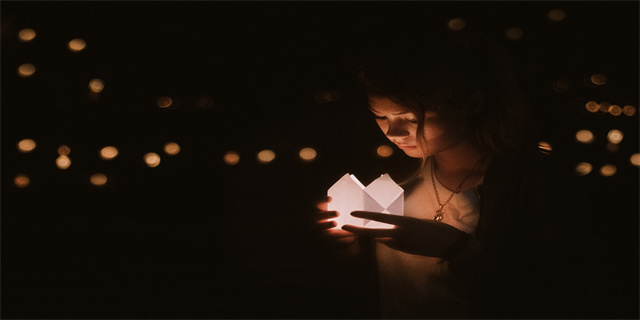首页 > 健康知识 正文
Exploring the Artistic Expression of Graffiti
Introduction to Graffiti
Graffiti has long been a contentious form of artistic expression that is both praised and criticized. It can be found in cities around the world, adorning walls, bridges, and public spaces. While many people view graffiti as vandalism, it has evolved into a recognized art form that allows individuals to express themselves and share their messages with the public. This article explores the history, impact, and significance of graffiti as a means of artistic expression.

The History of Graffiti
Graffiti dates back thousands of years to ancient civilizations such as the Romans, Greeks, and Egyptians. These early forms of graffiti were often used as political propaganda, marking territory, or communicating messages. In modern times, graffiti emerged as a form of urban rebellion and self-expression in the 1960s and 1970s. It became popular in inner cities, particularly among marginalized communities, as a way to reclaim public spaces and challenge societal norms.

The Evolution of Graffiti as an Art Form
Over the years, graffiti has evolved from simple tags and scribbles to intricate murals and street art. Artists have refined their techniques, experimenting with different styles, colors, and materials. Today, graffiti can be found in galleries, museums, and even sold for substantial amounts at auctions. Some graffiti artists, like Banksy, have gained international recognition and have become influential figures in the art world.
The Social and Political Impact of Graffiti
Graffiti has the power to shape public opinion, ignite conversations, and challenge the status quo. It serves as a platform for marginalized communities to express their frustrations, opinions, and hopes for a better future. For example, graffiti art often addresses issues such as racism, inequality, and social injustice. It breaks the boundaries of traditional art spaces and brings art directly to the streets where anyone can encounter it, fostering a sense of community and sparking dialogue.
The Legality of Graffiti
Despite its growing recognition as an art form, graffiti is still considered illegal in many places. Those who engage in graffiti risk fines, potential imprisonment, or community service. Local authorities argue that graffiti defaces public and private property and contributes to urban decay. However, some cities have embraced graffiti and designated specific areas for artists to legally create their works. This approach allows for the cultivation of creativity while preserving the integrity of public spaces.
The Global Reach of Graffiti
Graffiti is a global phenomenon that transcends cultural boundaries. It can be found in cities across the world, from New York to London, São Paulo to Tokyo. Local artists often incorporate elements of their culture and heritage into their graffiti, adding unique flavors to the art form. The internet and social media platforms have further facilitated the spread of graffiti, allowing artists to showcase their work to a global audience and connect with fellow artists from different backgrounds.
The Controversy Surrounding Graffiti
Despite its undeniable influence, graffiti is not without controversy. Some argue that it encourages vandalism, fosters a sense of lawlessness, and contributes to visual pollution in cities. Others argue that it is a legitimate form of artistic expression that adds vibrancy and character to urban environments. The debate over graffiti's artistic value and its place in society continues, with no clear consensus reached.
Conclusion
Graffiti, as a form of artistic expression, continues to evolve and challenge societal norms. It has the power to inspire, provoke, and engage viewers, showcasing the diversity of human experiences and perspectives. While the legal and social challenges surrounding graffiti persist, there is no denying its impact as a unique and powerful art form.
猜你喜欢
- 2024-03-16 strike过去式(Recap Historic Strike Brings About Transformation)
- 2024-03-16 vbtreeview(VBTreeView详解)
- 2024-03-16 中国人民文学出版社官网(探索人生之道——中国人民文学出版社)
- 2024-03-16 graffiti(Exploring the Artistic Expression of Graffiti)
- 2024-03-16 gamebar(Game Bar Boosting Your Gaming Experience on Windows)
- 2024-03-16 cad三维建模(CAD三维建模技术的应用与发展)
- 2024-03-16 facility(Facilities Enhancing Your Experience)
- 2024-03-16 四字词语解释大全1000个不重复(四字词语解释手册)
- 2024-03-16 drawupon是什么意思(利用DrawUpon进行设计)
- 2024-03-16 asteroids(Exploring the World of Asteroids)
- 2024-03-16 requestcode(RequestCode的作用以及用法)
- 2024-03-16 elfsack(elfsack - Exploring The World of Fashion)
- 2024-03-16strike过去式(Recap Historic Strike Brings About Transformation)
- 2024-03-16vbtreeview(VBTreeView详解)
- 2024-03-16中国人民文学出版社官网(探索人生之道——中国人民文学出版社)
- 2024-03-16graffiti(Exploring the Artistic Expression of Graffiti)
- 2024-03-16gamebar(Game Bar Boosting Your Gaming Experience on Windows)
- 2024-03-16cad三维建模(CAD三维建模技术的应用与发展)
- 2024-03-16facility(Facilities Enhancing Your Experience)
- 2024-03-16四字词语解释大全1000个不重复(四字词语解释手册)
- 2023-02-24大盘鸡的家常做法(家常版大盘鸡,方法简单,好吃接地气,吃完汤汁拌面,真过瘾)
- 2023-02-24大连在哪个省(东北三省最发达的城市——大连)
- 2023-02-24大麦茶怎么泡(大麦茶怎么泡?)
- 2023-02-24河蚌怎么处理(为什么在农村很少人吃河蚌?)
- 2023-02-24牛肉丸子的做法(自制纯手工牛肉丸,劲道弹性足,鲜香有嚼劲)
- 2023-02-24浏览器兼容性(浏览器兼容模式怎么设置?)
- 2023-02-24zuoche(领导开车的礼仪)
- 2023-02-24获取ip地址(如何查看电脑ip地址?)
- 2024-03-16四字词语解释大全1000个不重复(四字词语解释手册)
- 2024-03-16requestcode(RequestCode的作用以及用法)
- 2024-03-16elfsack(elfsack - Exploring The World of Fashion)
- 2024-03-15whatyougot(What Have You Obtained!)
- 2024-03-15oracleagileplm(Oracle Agile PLM Streamline Product Lifecycle Management)
- 2024-03-15juschedexe(Understanding the Functionality of juschedexe)
- 2024-03-15startupmanager(Startup Managers Pioneering Success in the Business World)
- 2024-03-15冠华照明与雷士照明(冠华照明与雷士照明的品牌竞争)
- 猜你喜欢
-
- strike过去式(Recap Historic Strike Brings About Transformation)
- vbtreeview(VBTreeView详解)
- 中国人民文学出版社官网(探索人生之道——中国人民文学出版社)
- graffiti(Exploring the Artistic Expression of Graffiti)
- gamebar(Game Bar Boosting Your Gaming Experience on Windows)
- cad三维建模(CAD三维建模技术的应用与发展)
- facility(Facilities Enhancing Your Experience)
- 四字词语解释大全1000个不重复(四字词语解释手册)
- drawupon是什么意思(利用DrawUpon进行设计)
- asteroids(Exploring the World of Asteroids)
- requestcode(RequestCode的作用以及用法)
- elfsack(elfsack - Exploring The World of Fashion)
- ecotourism(Exploring the Wonders of Ecotourism)
- 镜泊湖风景区旅游攻略(探寻镜泊湖旅游攻略,享受美妙风景)
- 人民币收藏网每日报价(人民币珍藏网每日报价:收藏人士必知的最新趋势)
- swot分析模板(SWOT分析模板:实现企业增长的优势与机遇)
- whatyougot(What Have You Obtained!)
- fifa2013(FIFA 2013 A Game That Revolutionized Virtual Soccer)
- 手机广告语大全56条(手机广告语大全56条 你绝对不能错过的营销利器)
- oracleagileplm(Oracle Agile PLM Streamline Product Lifecycle Management)
- juschedexe(Understanding the Functionality of juschedexe)
- teengirls(Teen Girls Navigating the Challenges of Adolescence)
- formula怎么记忆(如何轻松记忆mathematics formula)
- 603398股吧(分析603398股吧热点 如何投资)
- 点点通讯的三星手机(三星Move翻新版上市:闪耀点点通讯更多元)
- 保险公司理赔员工作好不好(保险公司理赔员:责任重大,工作有待提高)
- realman(真正的男子汉:生活中的力量展现)
- 众划算官网卖家中心(卖家中心:用最简单的方式从众划算获益)
- startupmanager(Startup Managers Pioneering Success in the Business World)
- tftpd32exe(TFTPD32EXE Efficient TFTP Server and Client Software)
